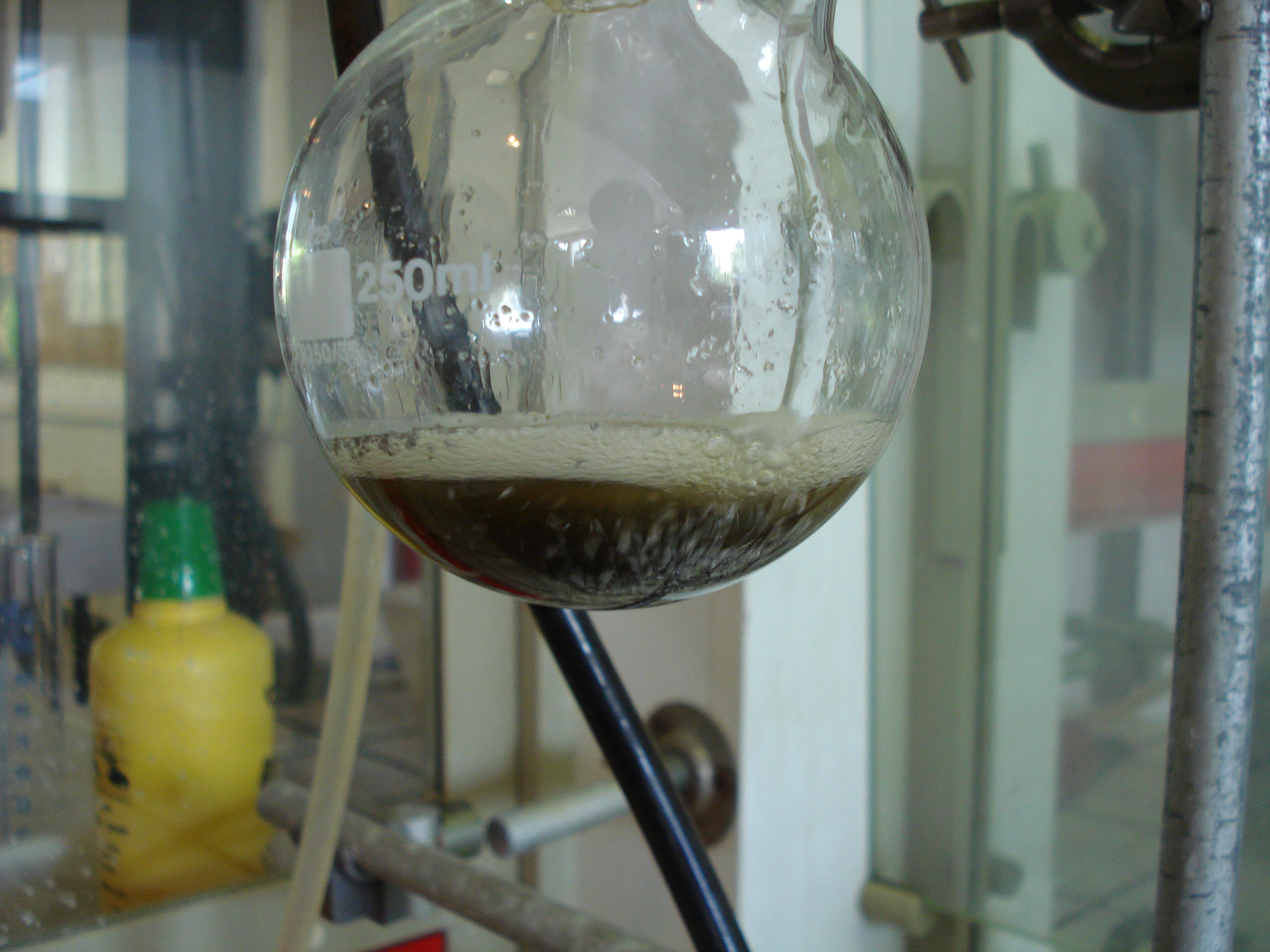phenylmagnesium bromide on:
[Wikipedia]
[Google]
[Amazon]
Phenylmagnesium bromide, with the simplified formula , is a
 Phenylmagnesium bromide is commercially available as solutions of
Phenylmagnesium bromide is commercially available as solutions of
magnesium
Magnesium is a chemical element with the symbol Mg and atomic number 12. It is a shiny gray metal having a low density, low melting point and high chemical reactivity. Like the other alkaline earth metals (group 2 of the periodic ...
-containing organometallic compound. It is commercially available as a solution in diethyl ether
Diethyl ether, or simply ether, is an organic compound in the ether class with the formula , sometimes abbreviated as (see Pseudoelement symbols). It is a colourless, highly volatile, sweet-smelling ("ethereal odour"), extremely flammable li ...
or tetrahydrofuran
Tetrahydrofuran (THF), or oxolane, is an organic compound with the formula (CH2)4O. The compound is classified as heterocyclic compound, specifically a cyclic ether. It is a colorless, water- miscible organic liquid with low viscosity. It is ...
(THF). Phenylmagnesium bromide is a Grignard reagent. It is often used as a synthetic equivalent for the phenyl "Ph−" synthon.
Preparation
 Phenylmagnesium bromide is commercially available as solutions of
Phenylmagnesium bromide is commercially available as solutions of diethyl ether
Diethyl ether, or simply ether, is an organic compound in the ether class with the formula , sometimes abbreviated as (see Pseudoelement symbols). It is a colourless, highly volatile, sweet-smelling ("ethereal odour"), extremely flammable li ...
or THF
Tetrahydrofuran (THF), or oxolane, is an organic compound with the formula (CH2)4O. The compound is classified as heterocyclic compound, specifically a cyclic ether. It is a colorless, water-miscible organic liquid with low viscosity. It is ma ...
. Laboratory preparation involves treating bromobenzene with magnesium
Magnesium is a chemical element with the symbol Mg and atomic number 12. It is a shiny gray metal having a low density, low melting point and high chemical reactivity. Like the other alkaline earth metals (group 2 of the periodic ...
metal, usually in the form of turnings. A small amount of iodine may be used to activate the magnesium to initiate the reaction.
Coordinating solvents such as ether or THF, are required to solvate (complex) the magnesium(II) center. The solvent must be aprotic A polar aprotic solvent is a solvent that lacks an acidic proton and is polar. Such solvents lack hydroxyl and amine groups. In contrast to protic solvents, these solvents do not serve as proton donors in hydrogen bonding
In chemistry, a hydro ...
since alcohols and water contain an acidic proton and thus react with phenylmagnesium bromide to give benzene
Benzene is an organic chemical compound with the molecular formula C6H6. The benzene molecule is composed of six carbon atoms joined in a planar ring with one hydrogen atom attached to each. Because it contains only carbon and hydrogen atoms ...
. Carbonyl-containing solvents, such as acetone
Acetone (2-propanone or dimethyl ketone), is an organic compound with the formula . It is the simplest and smallest ketone (). It is a colorless, highly volatile and flammable liquid with a characteristic pungent odour.
Acetone is miscibl ...
and ethyl acetate, are also incompatible with the reagent.
Structure
Although phenylmagnesium bromide is routinely represented as , the molecule is more complex. The compound invariably forms an adduct with two ligands from the ether or THF solvent. Thus, the Mg is tetrahedral and obeys the octet rule. The Mg–O distances are 201 and 206 pm whereas the Mg–C and Mg–Br distances are 220 pm and 244 pm, respectively.Chemistry
Phenylmagnesium bromide is a strong nucleophile as well as a strong base. It can abstract even mildly acidic protons, thus the substrate must be protected where necessary. It often adds to carbonyls, such as ketones, aldehydes. With carbon dioxide, it reacts to givebenzoic acid
Benzoic acid is a white (or colorless) solid organic compound with the formula , whose structure consists of a benzene ring () with a carboxyl () substituent. It is the simplest aromatic carboxylic acid. The name is derived from gum benzoin ...
after an acidic workup. If three equivalents are reacted with phosphorus trichloride
Phosphorus trichloride is an inorganic compound with the chemical formula PCl3. A colorless liquid when pure, it is an important industrial chemical, being used for the manufacture of phosphites and other organophosphorus compounds. It is toxic ...
, triphenylphosphine
Triphenylphosphine (IUPAC name: triphenylphosphane) is a common organophosphorus compound with the formula P(C6H5)3 and often abbreviated to P Ph3 or Ph3P. It is widely used in the synthesis of organic and organometallic compounds. PPh3 exists ...
can be made.
References
{{Reflist Organomagnesium compounds Phenyl compounds